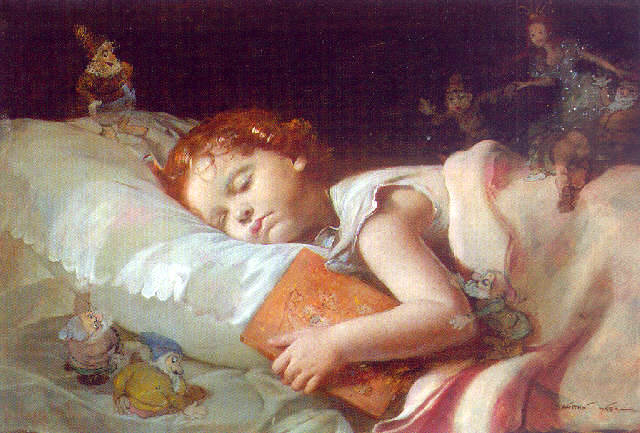Dreams give us more accurate information on mental life than wake reports.
© Franz Schrotzberg
Ever since Freud clinicians in the psychodynamic tradition have argued that dreams provide more accurate information about the emotional and psychic state of a patient than their waking reports.
These claims were buttressed to some extent by the spate of neuroimaging studies of the dreaming brain that demonstrated very high activation levels in the limbic emotional brain as well as lower activation levels in dorsal prefrontal regions (that normally regulate and inhibit impulses and emotions) during the dream state.
It was as if the dream state simultaneously involved a revved-up boosting or stimulation of emotional expression and then a pronounced loosening of restraints on the already over-stimulated emotional brain during the dream state. It is no wonder that careful observers of dreams argued that they better reflected our emotional states than anything we would say or do during waking life.
A recent paper by Nata´ lia B. Mota, Raimundo Furtado, Pedro P. C. Maia, Mauro Copelli & Sidarta Ribeiro from the Brain Institute at the Federal University of Rio Grande do Norte (UFRN), in Natal, Brazil and
reported in nature.com (
Scientific Reports 2013. 4 : 3691 | "Graph analysis of dream reports is especially informative about psychosis") suggests that "While dreaming exposes differences in the mnemonic records across individuals, waking dampens distinctions. (p. 3691)"
These authors used network and graph analysis to analyze dream reports and wake reports derived from clinical oral interviews of schizophrenic, bipolar type I, and healthy control subjects. They quantified using pre-written algorithms to capture a number of speech graph attributes (SGA) that characterize thought patterns in the reports.
In a speech graph analysis every word represents a node, and every temporal connection between consecutive words represents an edge. The authors counted several network parameters including total numbers of nodes (N) and edges (E); number of connected components: total of nodes on the largest connected component (LCC,the maximal subgraph in which all pairs of nodes are reachable from one another; Average shortest path (ASP, average length of the shortest path between pairs of nodes of a network) and clustering coefficient (CC, given a node n, the Clustering Coefficient Map (CCMap) is the set of fractions of all n neighbors that are also neighbors of each other).
In bipolar subjects dream events were reported with more connectivity, higher density, smaller distances (diameter and ASP) and higher clustering coefficient (CC) than waking events. Schizophrenics tended to show the opposite pattern while healthy controls fell in between these extremes.
Then the authors attempted to use analyses of wake vs dream reports to distinguish the 3 groups of participants. SGA analyses of the dream reports led to better classifications into the 3 groups than standard clinical tools! Bipolar and control subjects were indistinguishable by waking reports, but in dream reports bipolar subjects showed significantly less connectivity.
In short, dream-related SGA outperformed psychometric scores or waking-related data for group sorting.
Now why might dreams give us a better picture of the thinking and emotional life of people? Well, as mentioned above emotions are less regulated or inhibited during the dream state and this intense emotionality is memorable and so gets remembered by the individual and then "noticed" by investigators in dream reports.
Mota et al suggest another intriguing explanation as to why dreams constitute a privileged window into thought. They suggest that while waking reports are anchored on events shared with other people, dreams are anchored on memories that may or may not be shared with others and they are, in any case, difficult to retrieve after awakening-despite the fact that the material in the dream may be very emotional.
The combination of fragmented recall of materials that may be especially emotionally salient makes a request for a dream report yield more internally generated content than a request for a waking report. I suggest in addition that fragmented recall of emotionally salient content may also make it more difficult to lie about that content. One has to cue the emotion in order to generate further or better recall of the content and that cueing procedure makes it more difficult to lie, at least about the emotion.
In short, dreams contain a wealth of extraordinarily significant emotional information that remains untapped in clinical mental health circles.
Reader Comments
to our Newsletter